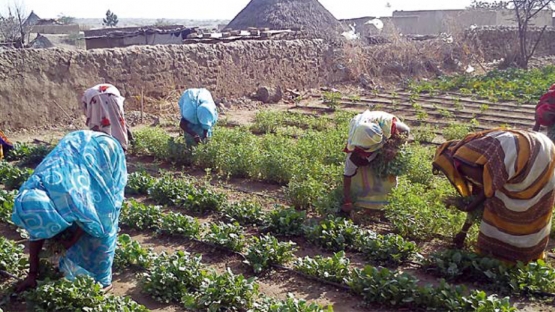Agriculture is the principal source of income and livelihoods for 60 to 80 percent of the population of Sudan, where 90 percent of the arable land is rainfed. Climate change and rainfall variability, water scarcity and the inaccessibility of other water sources have contributed to crop failures making it difficult for small-scale family farmers to maintain adequate livelihoods, particularly in the Kassala region in the eastern part of Sudan. As part of an IAEA technical cooperation pilot project aimed at saving water and increasing yields, the Joint FAO/IAEA Division and the Sudan Agricultural Research Corporation, have introduced small-scale family drip irrigation systems to subsistence farmers in the Kassala region to overcome water stress when growing vegetables. This system, which monitors soil water using nuclear techniques, enables farmers to schedule their crop irrigation when and where it Kassala is considered the food basket of Sudan. But without sufficient and continuous water supply, those crops are in peril every growing season. The Joint Division began working with the vegetable farmers in the area in 2014 to introduce family-scale drip irrigation systems that use much less water and also lead to better and more sustainable production. Initially, the work was undertaken with just a few “champion” women farmers who could pass on what they learned to neighbours and friends.
Drip irrigation is not a new technology, but this project is a great example of adopting what is already available and adapting it to the needs of a specific farming region. In this case, the two elements were a neutron probe, which the scientists used to determine the water requirement so that every drop will be used by the crops, and the nitrogen-15 isotopic technique to trace the movement of applied nitrogen fertilizer and hence determine the efficiency with which it is being used by crops.
Combining the water and nutrient information gathered at the research farms, this was adjusted to meet the local needs. In addition to providing farmers with the simplified drip irrigation system, scientists also train farmers in how to set up the drip system and schedule irrigation for different crop types.
As a result, onion yield increased from 20 tonnes per hectare using local surface irrigation to 27.4 tonnes per hectare using local drip irrigation, while at the same time, the quantity of water applied decreased from 16,000 m3 per hectare using local surface irrigation to 9,600 m3 per hectare using the family drip system. This meant water use decreased by 63 percent while yield increased by 43 percent. The net profit per hectare increased from US $2,440 under surface irrigation to US $3,820 under the family drip system.
The success of these “champion” farmers has resulted in the work spreading from village to village. Now, the Sudanese Red Crescent, through financial support from the United Nations Refugee Agency (UNHCR), is introducing more farming communities to the technology in an effort to help more farmers adapt to climate change and, ultimately, improve livelihoods and relieve poverty in the country. And since this is used for vegetable fields, which are usually the responsibility of women, more than half of the participating farmers are women.





